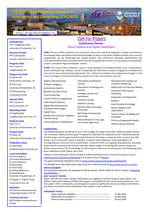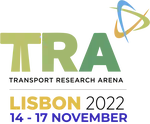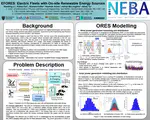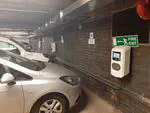News and Events
Funded by the European Space Agency, the ROARS (Revealing Orbital and Atmospheric Responses to Solar activity) project is to investigate how a swarm of small satellites, known as CubeSats, flying in formation in low Earth orbit (LEO) just 500km above the Earth. They carry a comprehensive suite of scientific instruments designed to measure changes in satellite flight paths, to provide the “missing” set of measurements necessary to revolutionise our current understanding of satellite drag and collision risks caused by space weather and space debris. These include the latest inter-satellite laser communications and ranging, state-of-the art global navigation satellite systems (including GPS), atmospheric and magnetic field sensors.
ESA released the £86 million (€100 million) campaign for Innovative Mission Concepts Enabled by Swarms of CubeSats at the start of this year and received 74 submissions, from which seven were competitively selected for Phase 0 funding to develop their concepts towards a flight opportunity. The ROARS mission, led by Universities of Warwick, has a 26 institution-strong consortium from across nine countries, including universities of Birmingham, Northumbria, Bath, UCL, Stuttgart, Imperial and Calgary, alongside industrial partner, OpenCosmos, the National Centre for Atmospheric Research , USA, the Space Research Institute, Austria, and Southwest Research Institute in the USA.
Would you like to unlock an incredible opportunity to exploring space and satellite (CubeSat) with a full PhD scholarship? We are lookng for talent PhD stduents to join our emerging space engineeering scheme. We offer full PhD scholarship, covering full tuition fees and an impressive stipend of £18,622 per year. This full PhD scholarship is a gateway to joining the £50M research centre (Northeast Space Skills and Technology, NESST) sponsored by UK Space Agency, Lockheed Martin, etc. to shape the future of space exploration. Embrace your passion for innovation and discovery.
2023 IEEE Smart World Congress (SWC2023) calls for Special Session / Workshop Proposals. A workshop or special session is an embedded session in SWC2023, focusing on a specific research topic or with tutorial values relevant to the main conference. Please email your proposals to the SWC2023 special session chair, Dr. Xuewu Dai (xuewu.dai@northumbria.ac.uk), by 15 Feb 2023
A FREE oneday hybrid workshop of “Modelling and Optimal Charging of Electric Fleets with Renewable Energies”. The EFORES project team at Northumbria University are delighted to invite you to our final workshop for the project EP/W028727/1: “Electric fleets with on-site renewable energy sources (EFORES): data-driven dynamic dispatching and charging under uncertainties”. This workshop is to disseminate our results and exchange ideas for further collaboration and industrial applications. This workshop is in hybrid mode.
• Venue: physcial in-person meeting at Hedley Suite (401), Sandiford Building, Northumbria University, 2 Sandyford Rd, Newcastle upon Tyne, NE1 8QH (Googlemap).
• Zoom: Virtual online meeting Zoom ID 856 6774 8941,password 202301.
• FREE Registration Click Here to register.
• Venue: physcial in-person meeting at Hedley Suite (401), Sandiford Building, Northumbria University, 2 Sandyford Rd, Newcastle upon Tyne, NE1 8QH (Googlemap).
• Zoom: Virtual online meeting Zoom ID 856 6774 8941,password 202301.
• FREE Registration Click Here to register.
















![A new website [www.efores.net] for the EFORES project and Dr. X. Dai's Networked Control and Intelligent Scheduling (NCIS) lab](/news/20211201-newwebsite/featured_hu1fbe5d0e361d753a16398023d9b51282_76197_4d55abc054ebd790cd01a91784c306b6.webp)
